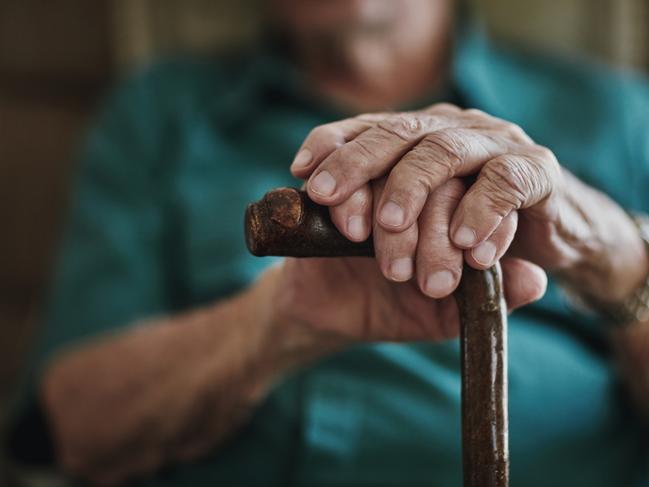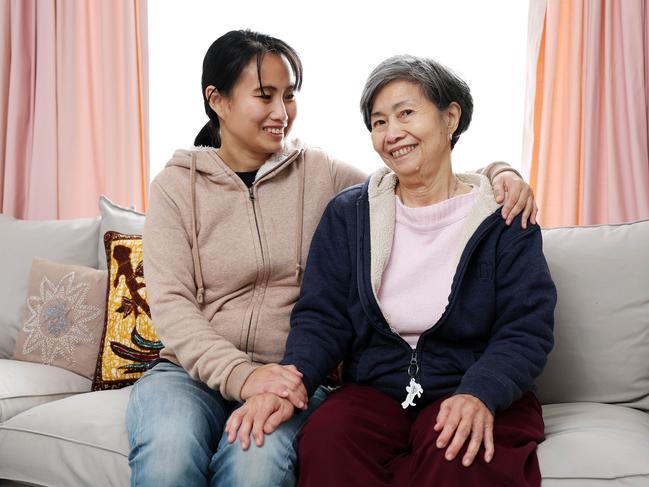Australians forced to pay up to $3 million for aged care despite claims the sector is going broke
Aged care homes have been blasted for “gouging as much money as humanly possible from the taxpayer and going after the assets of those people who are in their care”. See how they do it.
National
Don't miss out on the headlines from National. Followed categories will be added to My News.
Vulnerable elderly people and their relatives are being charged up to $3 million to buy into nursing homes, while the industry claims to be going broke.
On top of these hefty accommodation costs, residents are being charged daily fees — for services like meals, cleaning, laundry and management – which can add up to more than $100,000 a year.
Despite this, an investigation has found half of all Australian homes are crying poor and running at a loss on paper.
“What it’s doing is claiming poverty so that they can pay shareholders,” said Older Women’s Network president Beverley Baker.
“All they’re interested in doing is gouging as much money as humanly possible from the taxpayer and going after the assets of those people who are in their care.”
The revelations come three years after the Royal Commission into Aged Care uncovered substandard care, including assaults, maggot-infested wounds and malnutrition.
This abuse is continuing with tens of thousands of cases of sexual abuse and assaults and more than 9000 cases of neglect documented by the Productivity Commission in 2022-2023.
And many homes still do not meet the required 200 minutes of care per day to residents.

Despite these failings, the industry is demanding the federal government let it charge nursing homes residents even steeper accommodation fees, under upcoming aged care reforms.
The Refundable Accommodation Deposits (RAD) – the amount a person pays to enter a nursing home – are meant to be capped by the government at $550,000, with nursing homes pocketing all of the interest.
Yet our investigation has uncovered that the federal government has allowed some providers to charge RADs of more than $1m on more than 440 rooms – and in one case, $3.2m.
A spokesperson for the Minister for Aged Care Anika Wells said “providers can seek approval from the Independent Health and Aged Care Pricing Authority to charge more than this ($550,000) amount”.
When a resident can’t stump up the RAD they are instead charged a daily fee calculated at an 8.38 per cent interest rate on the RAD amount.
In addition to the RAD, every resident of a nursing home is charged a $61.96 per day ($22,615.40 per year) basic daily fee.
And depending on the size of their income, they can be charged a means-tested care fee of up to $33,309.29 per year (capped at $79,942.44 in a lifetime).
Aged care accounting firm Stewart Brown reports that 40 per cent of homes are now also charging residents “additional” or “extra service fees” of up to $100 a day which are not subsidised by the government.

Australia’s largest aged care provider Opal Health Care which operates 101 facilities made a loss of $32.3 million in 2022-23 but spent $3.5 million on management salaries. It has acquired more than 36 homes from other providers in recent years.
A spokesperson for Opal said “we will continue to look at expanding our services to offer care to the more than 4 million Australians aged over 65, by acquiring aged care assets or creating new ones.”
The company’s losses were due to the amortisation of bed licences resulting from proposed changes to the Aged Care Act, the spokesperson said.
“The last year these costs will be incurred is in the 2023-2024 financial year,” the spokesperson said.
Another provider – Bolton Clark – which owns 88 aged care homes has sold 22 of the nursing homes to a property trust owned by Australian Unity and then rented them back.
It recently bought three other providers – Allity, Acacia Living Group and McKenzie Aged Care Group – and declared a loss of $232.5 million in 2022-2023.
Bolton Clark CEO Stephen Muggleton said “as a not-for-profit we reinvest any surplus to achieve our mission of helping people live a life of fulfilment”.
The groups’s loss was due to a capital-gains tax liability of $197.7 million after it took over the Allity group “and does not impact on the Group’s ability to operate on a going concern basis”, he said.
Regis, which owns more than 60 aged care homes, posted a loss of $28.4 million but still paid $6 million in dividends to shareholders on April 14 2023 and $22.5 million in August 2023.
It’s key management personnel were paid a total of $3.115 million in 2022-2023.
Regis was approached for comment but did not respond.

Little Company of Mary, which owns 72 facilities trading as Calvary, purchased 50 aged care homes owned by Japara in November 2021 for $380 million despite recording a $24 million deficit that financial year.
“None of these companies, whether they’re for profit or not, would be investing more money in the sector if it was a losing game, right?” forensic accountant Jason Ward told Centre for International Corporate Tax Accountability and Research.
National CEO of Calvary Martin Bowles said “the acquisition was not funded with government money. Calvary contributed some of our own equity and sourced external funding from a small syndicate of banks, to which we pay commercial interest.”
“Calvary’s 2021 profit and loss balance sheet figures represent the group accounts for all of Calvary’s services. In that year, results were impacted by Covid-19 associated costs like PPE and government-imposed restrictions, as well as the challenging rise in operating costs for private hospitals not matched by health funds.” he said.
Meanwhile, a major review called for refundable entry fees to be scrapped and be replaced by a daily non- refundable rental fee in a move that would rapidly whittle away the inheritance the younger generations now rely on to afford to buy a home.
’I WANT TO CARE FOR MUM MYSELF’
Shery Sjamsudin would much rather look after her 75-year-old elderly mother Maria, than bear the thought of placing her in an aged care.
Four years ago, she moved her into her own home to live with her young family.
The decision to take on the caring role also meant Ms Sjamsudin, 42, was forced to give up her full time job in the auditing and finance industry.
“I’ve heard too many horror stories of people putting their relatives into aged care when they were still okay and mentally functioning,” Ms Sjamsudin said.
“Then their health declines quite rapidly and it could be for different reasons … maybe because there’s no stimulation or a lot of loneliness in there which is why I don’t want my mum in there now.
“At the moment, I want to take care of her for as long as I possibly can while she lives with us.
“She also relies heavily on me as an (Indonesian) interpreter which would also make it difficult for her to be looked after properly in a facility.”

Ms Sjamsudin is one of 2.65 million Australians working as unpaid carers, with 71.8 per cent women taking on the caregiving role.
She also highlighted the insufficient support provided by the government for families who choose to care for their loved ones at home.
“I’m having to be not only a carer, but also a wife and mother and it has taken its toll,” she said.
“I’m trying now to take care of my mental health a bit more because now matter how rewarding it is caring for mum, it can sometimes get a bit too much.”
HOW TO FIX IT
Charles Maskell Knight – who served as a senior health department bureaucrat for 25 years – said one way to solve the problem of the missing billions is for the government to regulate nursing homes like health insurance funds.
“If you run a private health insurer, you have to have essentially an entity that does that, and it’s got to have designated bank accounts and all your activity associated with running your insurer goes through that bank account,” Mr Knight said.
“And APRA then publishes all the financial data related to that account, including management costs and benefit levels. So if you are paying a related party inflated administration fees or making interest-free loans that will be apparent” he said.

The second thing is to actually start paying nursing homes an explicit profit.
Under a reform model the government would pay homes a guaranteed profit per resident, with the amount linked to the quality of care provided.
The amount could be tweaked to provide incentives for delivering care in under-serviced areas, with homes brave enough to provide aged care in remote areas getting a profit of $15,000 per resident per year, Mr Knight said.
Jason Ward from the Centre for International Corporate Tax Accountability and Research said what’s really needed is much more visibility over where taxpayer and residents money goes.
“We were pushing for reforms that would allow people to see actually what goes on in these undisclosed transactions and we didn’t get that far,” Mr Ward said.
“There is an increased amount of information in there but it doesn’t tell you how much money they spent on rent, for example.
“(Chartered accountant firm) StewartBrown as the sort of the gatekeeper of the industry and they’re the ones who put out the report every year saying the industry is in a state of collapse, and we need more government funding,” Mr Ward said.
The key missing ingredient in their analysis is they’re putting in real estate costs that make them unprofitable “but if you were to take out the real estate charges, boom, all of a sudden there’s money there,” he said.
More Coverage
Originally published as Australians forced to pay up to $3 million for aged care despite claims the sector is going broke




